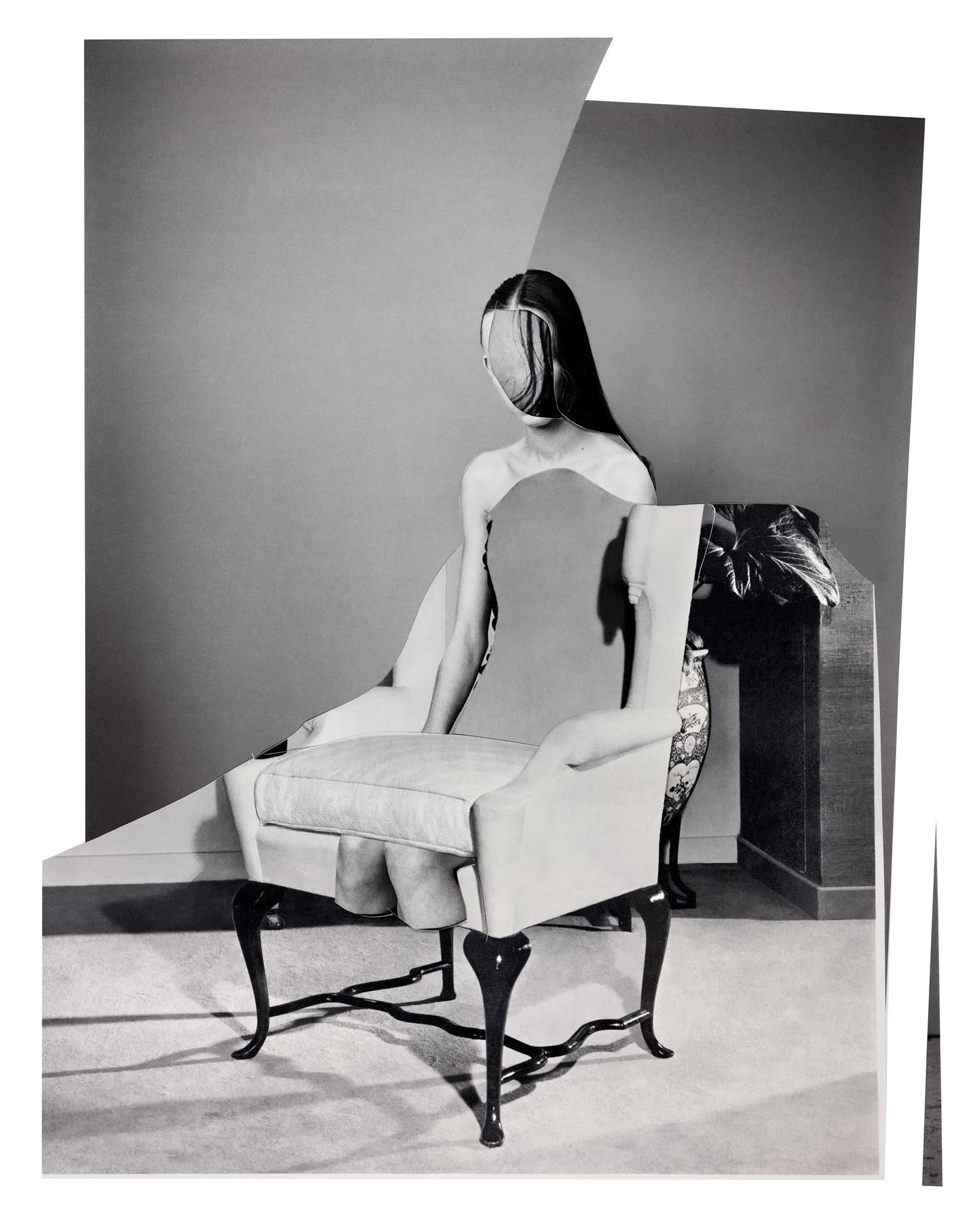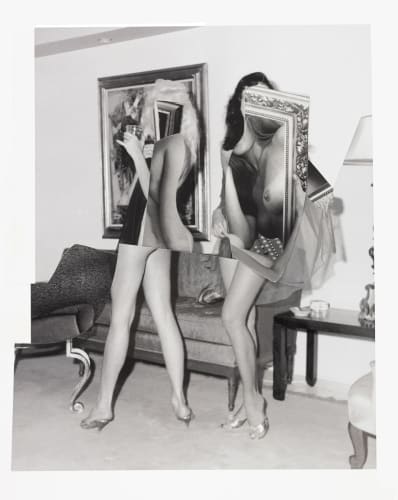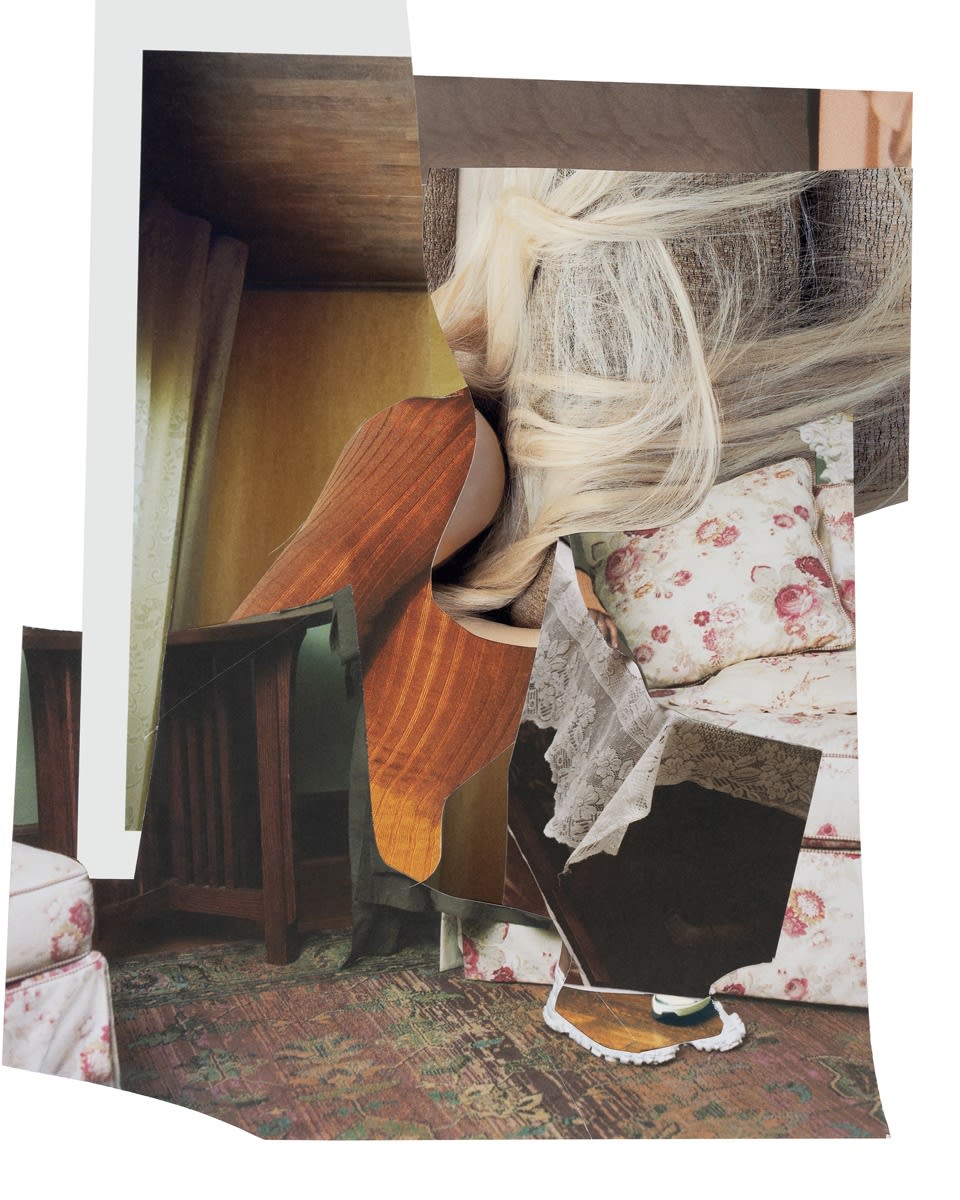By splicing found imagery from magazines and books, the artist teases out new narratives and rephotographs the result.

Or perhaps that's a subjective interpretation? Because Young doesn't just keep mum about this work, they believe their take on it is both personal and not fully conscious. Born and raised in London, Young studied graphic design at Central Saint Martins: UAL, an interdisciplinary course which included modules on semiotics and film theory. There, they "became aware of how 'meaning' is visually communicated and implied. I actively avoid depicting conscious ideas or narratives, often employing chance strategies in my process," they say. "And while no choice is an accident, I use an emotional rather than an intellectual response when I select, cut, or assemble my source material.
"Despite this approach, I still find clear, subjective meaning in the work once it is complete, which always surprises me," they continue. "This realisation usually occurs to me only when I come to rephotograph the collage. I think that's because looking through the camera is an act of detachment; I become the viewer instead of the maker, and so I have the freedom to read the unconscious cues which reveal my internal thoughts and recurring ideas. It's as though a hidden force has been at play, telling an irrepressible truth. I never know what will emerge next, which is exciting. No other medium has allowed me this amount of insight into my subconscious."
Or perhaps that's a subjective interpretation? Because Young doesn't just keep mum about this work, they believe their take on it is both personal and not fully conscious. Born and raised in London, Young studied graphic design at Central Saint Martins: UAL, an interdisciplinary course which included modules on semiotics and film theory. There, they "became aware of how 'meaning' is visually communicated and implied. I actively avoid depicting conscious ideas or narratives, often employing chance strategies in my process," they say. "And while no choice is an accident, I use an emotional rather than an intellectual response when I select, cut, or assemble my source material.
"Despite this approach, I still find clear, subjective meaning in the work once it is complete, which always surprises me," they continue. "This realisation usually occurs to me only when I come to rephotograph the collage. I think that's because looking through the camera is an act of detachment; I become the viewer instead of the maker, and so I have the freedom to read the unconscious cues which reveal my internal thoughts and recurring ideas. It's as though a hidden force has been at play, telling an irrepressible truth. I never know what will emerge next, which is exciting. No other medium has allowed me this amount of insight into my subconscious."

By the same token, Young prefers not to use their work "as a platform for an overt message", suggesting that viewers find their own meanings. Working with images found in secondhand books and magazines, they use a surgical scalpel to cut out shapes, working in response to elements such as colour, texture, pattern and form. Young layers or splices the elements together by making tiny incisions and sticking them down, or making loose combinations directly under a camera. Sometimes these cut-outs hang around for months before finding their way into a collage.
Some of the work has a vintage feel but Young says much of the source material is contemporary. "All photographic material carries intrinsic historical context, which affects interpretation and meaning" they say. Their images are finding a contemporary audience via magazines such as Self Service and Another Man, and via Gestalten, which last year published the third volume of the book The Age of Collage. The work was also shown in Denmark last year at the inaugural LESS Festival of Contemporary Collage in Denmark.
As the festival blurb puts it, the art of collage seems particularly appropriate now, as Covid-19 and social shifts make "the tectonic plates of our civilisation shift". But Young's inspiration dates further back, to Surrealism or to William Borough's Naked Lunch. As Andre Breton put it in the first Manifesto of Surrealism, this is work that taps into "pure psychic automatism…the dictation of thought in the absence of all control exercised by reason and outside all moral or aesthetic concerns".


